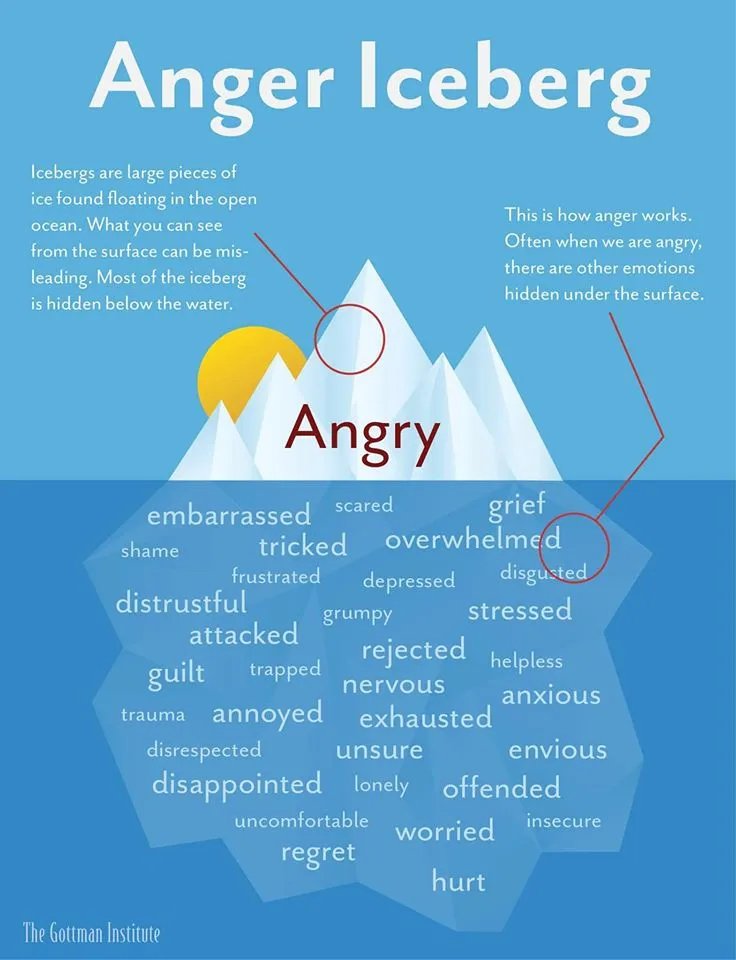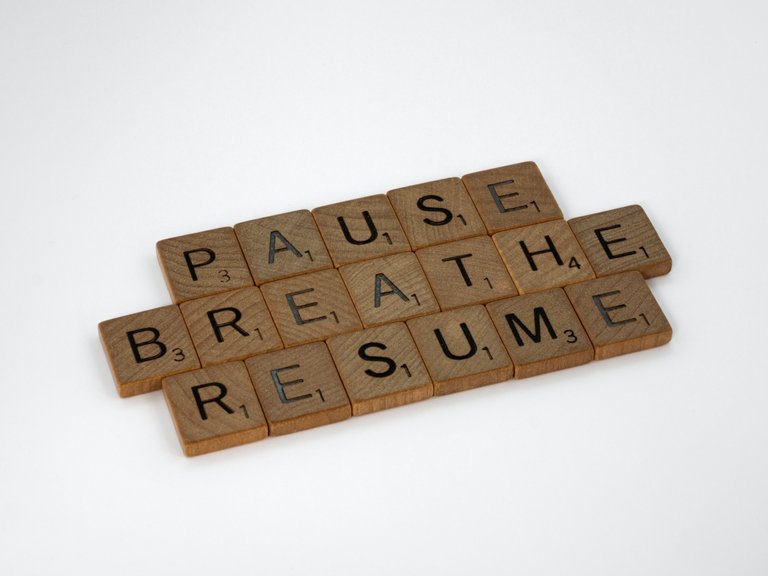“It’s not so much knowing when to speak, when to pause.” - Jack Benny

Releasing anger feels good, doesn’t it? It’s gratifying to have that quick outburst of emotion, if only for a split second. It’s like a pot of water that’s been boiling for a bit too long, just dying to spill over into the flame. If only we released that emotion in constructive ways!
We’ve all “lost our cool” at one time or another. And then there are those who lose it a bit more than others, where they allow their anger to define who they are. I’ve dated a few of these types of people, and it’s never pleasant.
After the fiasco that was the Academy Awards this year, I thought it best to visit the topic of anger. If you follow me on Instagram, you’ll know I turned into a full-on neurological commentator as the unfortunate events transpired live in front of 10s of millions of people. As shocked as I was when I saw “the slap heard ‘round the world”, I also was, admittedly, very excited. The nerd in me came out as it was a perfect, real world live example of what happens when one allows their amygdala to take over, also known as amygdala hijack. It’s one thing to use visuals of the brain to explain what happens, but it’s quite another when you’re watching it happen in front of you!
We describe anger as an intense feeling in response to feeling frustrated, hurt, disappointed, or threatened.
That last one, “threatened”, is where the amygdala believes there to be danger and sets of alarms in the brain called “fight-or-flight”. All kinds of stress hormones are immediately flooding the body. Those alarms were of absolute necessity when we were cave dwellers fighting for survival against saber-toothed tigers. However, because our brain hasn’t evolved in over 10,000 years, a hurtful joke or insult in our modern world can still set off the amygdala as if one’s life is at risk. And that’s when overreactions happen, sometimes of epic proportions.
The brain’s primary job is to keep us alive, not to think. The most powerful, fastest to react, and oldest part of our brain is the amygdala, which handles our emotions. Deciding how to handle our anger takes an extraordinary amount of critical thinking. Without rational thought, anger comes out in a variety of ways, including outbursts (whether verbal or physical), sadness, sulking, and depression. Unfortunately, doctors often misdiagnose men with anger issues as simply having too much stress. When in reality, symptoms of depression in men often translate into anger. Instead of getting to the root cause, men are often dismissed as being “hot heads”.
There’s a considerable amount of pain behind anger.

To be honest, as much as Mr. Rogers’ Neighborhood was geared towards children, I truly believe adults need to revisit his teachings:
What do you do with the Mad that you Feel?
What do you do with the mad that you feel?
When you feel so mad you could bite?
When the whole wide world seems oh, so wrong…
And nothing you do seems very right?
What do you do? Do you punch a bag?
Do you pound some clay or some dough?
Do you round up friends for a game of tag?
Or see how fast you go?
It’s great to be able to stop
When you’ve planned a thing that’s wrong,
And be able to do something else instead
And think this song:
I can stop when I want to
Can stop when I wish
I can stop, stop, stop any time.
And what a good feeling to feel like this
And know that the feeling is really mine.
Know that there’s something deep inside
That helps us become what we can.
For a girl can be someday a woman
And a boy can be someday a man.
Anger can be constructive, right? It can be the very thing that drives social movements and positive change. The ability to control it, though, is not in our favor. That boiling pot spills over more often than not. But there are ways to help ourselves avoid calamity.
Power in the Pause
Because we know the neocortex part of our brain is the least evolved, slowest to respond, and handles our critical and rational thinking, we must empower ourselves by taking a pause. That’s a little easier said than done, however, especially in today’s world, where instant replies are valued and also rewarded by algorithms.
But I challenge you to remember why these algorithms, which are part of our everyday lives, exist at all. They want you to react quickly in order to serve custom-targeted advertising. That’s it. That’s why algorithms are built the way they are. They need you more than you need them. They are not created to provide a healthy space for your brain to thrive. Knowing that off the bat will help you realize you must always be in control of your reaction time.
Software developers and engineers are not thinking about how to create a happier, well-rounded society. Without you realizing it, they’re creating technologies to sabotage your primal instincts in order to make money. It’s your job to slow down your reaction time in order to allow the critical thinking part of your brain time to kick in.
You can blame whoever you want on your reactions. Will Smith blamed a comedian. I’ve had exes who have used the hilarious excuse of “You made me do it”.
No, no. No one MAKES you do anything. You may be a human, who unfortunately is running on a very archaic brain system which is ill-equipped to handle modern society. However, you have control over it. This is where the power of the pause comes in and should be a part of your everyday life.
Can you imagine what the outcome would have been had Will Smith taken 2 minutes and 3 deep breaths? No slap would have happened. I know that much!
His neocortex would have had time to kick in and say, “Don’t be insane, Will. We’re not getting up and hitting someone simply because we feel offended by their words.”
Of course, it’s only AFTER the fact that we realize what a dumb mistake we made. The amygdala is quiet by then and the neocortex is like “You moron! What were you thinking?! Now, you have to apologize for acting like an uncontrolled cave-dweller!”
And that’s what happens when we lose control of our amygdala. It literally turns off our rational part of our brain because it says, “Oh my god! Danger! Danger! Must act to save our life!”
Blow up. Apologize. Blow up. Apologize.
At what point do you gain control of your brain? Because if you don’t have control, who does?
- It’s unacceptable to say, “I pop off easily because I’m an emotional person”.
- It’s unacceptable to say, “I’m just really passionate”.
- It’s unacceptable to say, “Well, they made me do it”.
- Or my all-time favorite, it’s unacceptable to say, “I just really care a lot”.
You’re not fooling anyone. It’s none of those things. You’re simply someone who has zero control over your emotions and refuses self-accountability. You think taking 3 deep breaths and a pause is ridiculous because “This is how I am. Take it or leave it”.
I’ll leave it, thank you very much.
An uncontrolled brain is by far the most unattractive quality a person can have. Once someone loses control in front of me, they can never go back. I can’t look at them the same way ever again. Nail in the coffin. It’s not that I lose respect for them. It’s that they show their true colors, and it looks like a little child in an adult costume. And it actually scares me, to be very honest.
The most cringe-worthy thing to witness is a spastic person pretending to be an adult. I simply shake my head in embarrassment for them and walk away.
Stop and ask yourself the following before reacting:
- Is it true?
- Is it kind?
- Is it necessary?
- Is this the right place?
- Are these the right people?
Your brain. YOUR RESPONSIBLITY.
Did You Know?

There’s a really simple and easy to remember tactic you can employ to slow down your emotional reactions called the Six Second Pause.
The purpose is to slow down your reaction and let the emotional energy relax a moment. It works because the chemicals of emotion inside our brains and bodies only last about six seconds. Normally, when we have strong feelings, we keep producing more and more of the feeling molecules. But if we can stop for a short moment, the flood of chemicals slows down. The trick with a Six Second Pause is to refocus your brain by shifting attention from the emotional part (the “limbic brain”) to the analytical part of your brain (called the “Cortex”).
When your emotions are running high, put your analytical brain to work! Below are a few things you can choose from. But one pick AHEAD of time. You don’t want to get stuck in the middle of an uncontrolled outburst without some tools in your toolbox to help you.
- Solve 6 multiplication problems in your head. They don’t have to be complex. Simple, easy, and effective to turn on your analytical part and quiet down the emotions.
- Name 6 of your favorite foods in alphabetical order.
- Name 6 states with the letter “N”.
Don’t get stuck at the end of an outburst, only to have to apologize for your uncontrolled emotional reaction. Plan your pause before you get upset. The more you work the plan, the more paved the brain pattern becomes, and the easier it will be to stop the amygdala from freaking out.
And for the love of God, breathe! Your brain needs oxygen to function. Shallow breaths only strengthen the amygdala to panic even more.
It’s all about awareness of your body and of your thoughts.
All. The. Time.
Congratulations @kforkira! You have completed the following achievement on the Hive blockchain and have been rewarded with new badge(s):
Your next target is to reach 50 upvotes.
You can view your badges on your board and compare yourself to others in the Ranking
If you no longer want to receive notifications, reply to this comment with the word
STOPCheck out the last post from @hivebuzz:
Support the HiveBuzz project. Vote for our proposal!